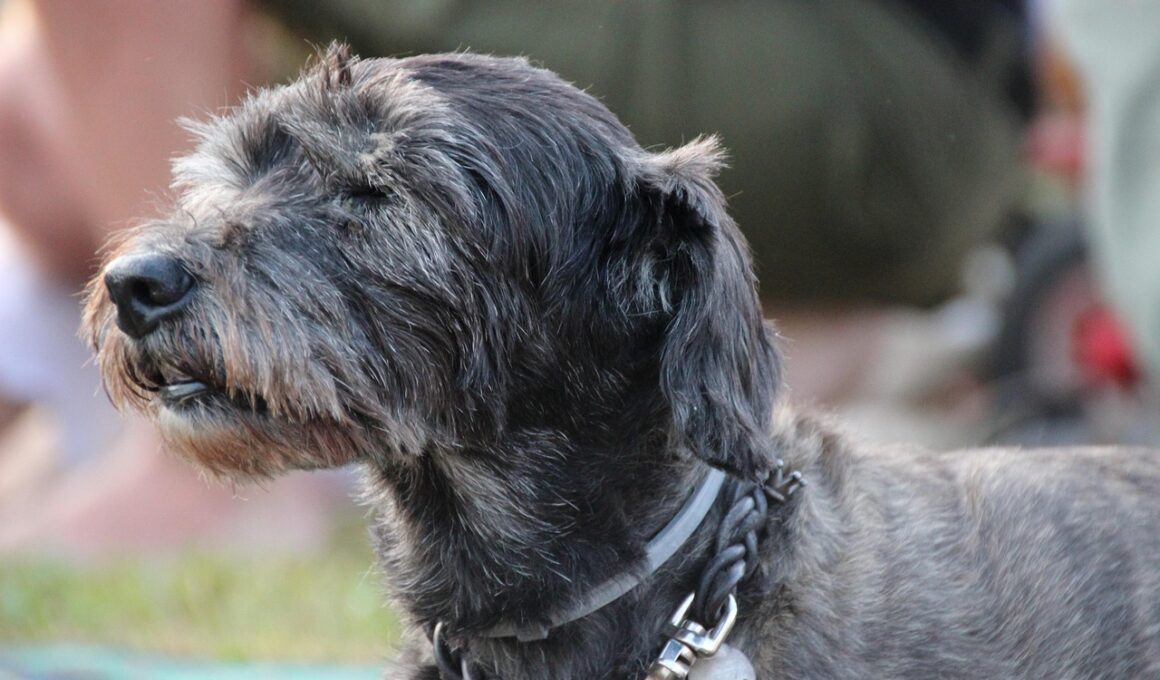Recognizing and Treating Canine Cognitive Dysfunction
Canine Cognitive Dysfunction (CCD) is a condition seen in senior dogs that resembles human dementia. As dogs age, their cognitive functions may decline, leading to various behavioral issues. It’s important for dog owners to recognize the signs early in order to provide the best possible care. Symptoms such as confusion, disrupted sleep patterns, increased anxiety, and changes in social interactions can indicate underlying cognitive issues. Observing changes in a dog’s behavior is crucial; for instance, a previously active dog may seem disinterested and withdrawn. Additionally, wandering aimlessly or losing house-training skills can suggest CCD. Identifying these symptoms allows pet owners to seek veterinary advice. A veterinarian may conduct tests to rule out other health problems that can mimic cognitive dysfunction. Proper diagnosis is essential for effective management. In many cases, a combination of medication, dietary changes, and mental stimulation can help alleviate symptoms. By understanding the condition and providing suitable care, pet owners can improve their senior dogs’ quality of life, ensuring they remain happy and engaged as they age.
Understanding CCD can significantly enhance how owners respond to their pets’ needs. Thus, early intervention is key; creating a mentally stimulating environment can slow cognitive decline. Engaging your dog through puzzles, scent games, and interactive toys can help maintain mental sharpness. Regular exercise is also beneficial, as it promotes overall health and well-being. Simple daily walks or playtime can strengthen the bond between owner and pet while combating behavioral changes. Nutrition plays a critical role as well. Diets rich in antioxidants, omega-3 fatty acids, and essential vitamins are believed to support brain health. Pet owners should consult their veterinarian regarding the optimal diet for aging dogs. Additionally, routine vet check-ups are essential; they help monitor the condition and adjust treatments as needed. Monitoring your dog’s behavior regularly can make a significant difference. Keeping a journal to log any behavioral changes may aid in discussions with your vet. This proactive approach not only helps in earlier diagnosis but also in customizing treatment options tailored to your senior dog’s requirements. A well-structured routine can also provide a sense of stability and security for aging dogs.
Common Symptoms of Canine Cognitive Dysfunction
Recognizing the symptoms of CCD is crucial for timely intervention. Dogs affected by CCD exhibit a range of behavioral changes that might be surprising to their owners. One common symptom is disorientation; dogs may appear lost in familiar surroundings or forget previously learned commands. This confusion can lead to increased anxiety. Changes in sleep patterns can also occur; dogs may sleep excessively during the day but become restless at night, which can disrupt their owners’ sleep as well. Other signs can include decreased social interaction with family members or a lack of interest in play. Dogs may also engage in repetitive behaviors, such as pacing or barking, especially when left alone. It’s important for pet owners to take these signs seriously. Revisiting familiar environments, helping them through transitions, and maintaining routines can help ease their anxiety while providing a sense of security. For those concerned about changes in their dog’s behavior, consultation with a veterinary behaviorist may also be beneficial. Furthermore, educating oneself about older dogs’ needs can empower pet owners to create a supportive and loving environment that accommodates their changes.
As CCD progresses, other health complications may emerge. It’s essential to understand that CCD can be associated with physical health issues, impacting how cognitive symptoms manifest. For example, arthritis-related pain might cause changes in mobility, leading to frustration and behavioral changes. Managing these physical health issues can significantly improve a dog’s overall quality of life. Regular veterinary check-ups are paramount; they can help identify underlying conditions contributing to behavioral changes. Consequently, ensuring your dog receives joint supplements or pain relief can improve their comfort and reduce stress. Additionally, creating a comfortable space for rest and relaxation can further help manage anxiety. Environmental enrichment is vital, as providing interactive toys can encourage mental stimulation and keep seniors engaged. While CCD may present many challenges, understanding its complexities can guide owners in providing the necessary support. Dogs thrive on routine, so maintaining consistency in feeding, medication, and daily activities can help manage symptoms. It’s also beneficial for pet owners to reach out to support groups or online communities sharing experiences with senior dog care.
Treatment Options for Canine Cognitive Dysfunction
Exploring treatment options for CCD can seem daunting, but there are various approaches available to help. Treating CCD often involves medication specifically designed for cognitive dysfunction in dogs. Medications like selegiline may improve symptoms but should only be administered under veterinary supervision. Complementary therapies, such as behavioral modification and environmental enrichment, can also produce positive results. Encouraging mental stimulation through games, interactive toys, or even new training exercises can significantly benefit senior dogs. In addition to behavioral strategies, nutritional supplements formulated to support cognitive function are widely available. Omega-3 fatty acids, antioxidants, and specific vitamins found in these supplements have been shown to enhance brain health. Owners should discuss with their veterinarians about incorporating these into their pet’s diet. Furthermore, providing a stable daily routine can alleviate stress and confusion for dogs suffering from CCD. Like people, dogs thrive in environments where they feel safe and secure. Lastly, mindfulness activities like gentle massages or calming music can also serve as soothing interventions while promoting overall well-being.
Integrating all these elements into a structured care plan can greatly enhance an older dog’s quality of life. Caretakers often overlook the importance of maintaining consistency, which is essential for dogs with cognitive dysfunction. Establishing a structured schedule for meals, walks, and play sessions can provide comfort and clarity. Creating a familiar environment by minimizing sudden changes in surroundings and encouraging exploration can also help. Keeping the dog’s living environment clutter-free reduces anxiety and allows easier navigation. Owners should also utilize verbal cues and commands consistently to reinforce positive behavior. Building a strong relationship with your senior dog can significantly impact their emotional state, so spending quality time together is vital. Socialization remains essential, and introducing gentle interactions with younger pets can add a new dimension to their day-to-day activities. Regular stimulation, whether through engaging toys or simple training practices, can keep your dog mentally alert. Furthermore, documenting behavioral patterns over time can provide essential insights for adjusting care plans effectively. In conclusion, being observant, proactive, and compassionate can help ensure senior dogs live fulfilling lives.
Conclusion: Improving Quality of Life in Senior Dogs
Ultimately, managing canine cognitive dysfunction requires patience, love, and understanding. As owners, recognizing that senior dogs may struggle with mental challenges is essential for providing appropriate support. Ensuring their physical comfort through proper diet and routine care can significantly improve their quality of life. Continued engagement, both mentally and physically, can stave off further deterioration of cognitive functions. Staying informed about canine behavior, health, and treatment options can empower owners to make sound decisions regarding their pet’s care. Moreover, seeking support from veterinarians and communities can provide valuable resources and insights into coping with CCD. Employees in animal clinics often have recommendations, advice, and resources available to help guide conversations. Quality of life doesn’t stop with age; maintaining seniors in their golden years means providing an enriching environment that nurtures their emotional and cognitive needs. Loving and caring for senior dogs builds a lasting bond that brings joy not just to them but to their families. While navigating the challenges of aging, the unconditional love shared between a senior dog and owner remains one of life’s greatest gifts.


